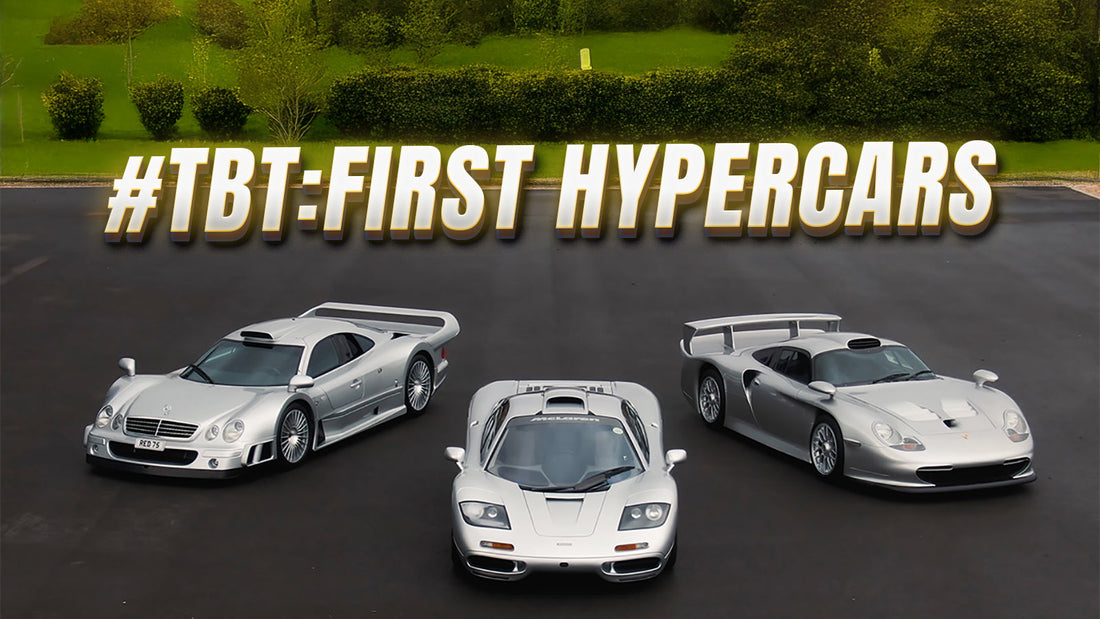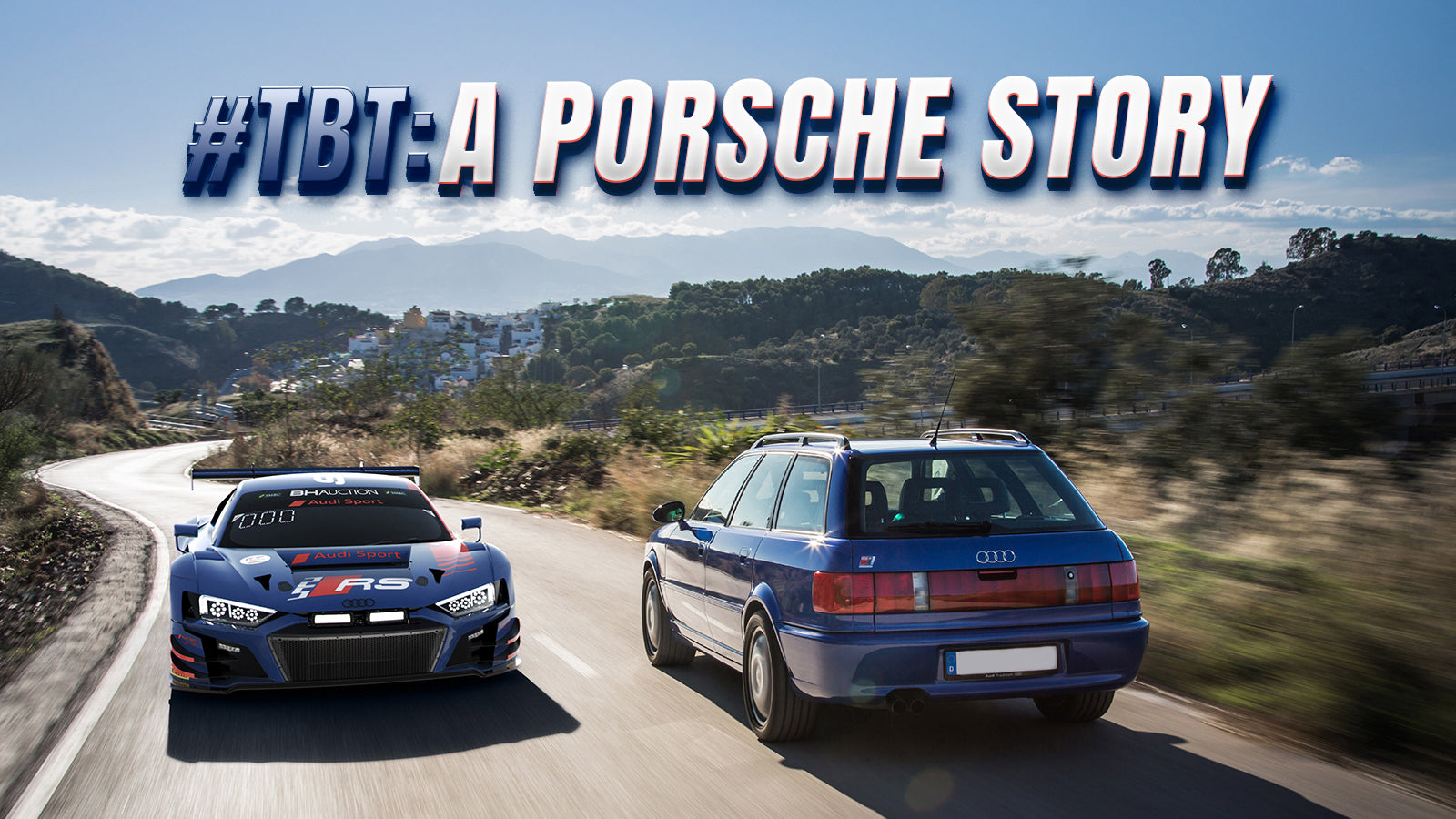Throwback Thursday: The "Hypercars" Before the Term was Invented
Can TangünerShare
Throwback Thursday is a weekly trip down memory lane. We shed light on the cultural significance of hero cars from the past, which paved the way for the machinery we enjoy today.
There are average cars, there are good cars, there are great cars. And there are some that leave us in awe. Holy grails. Legends. Here’s the ultimate trio—the unobtanium. The hypercars, before the term was even invented. The stuff that 90’s kids’ dreams were made of. The McLaren F1, Porsche 911 GT1, and Mercedes-Benz CLK-GTR.
The Three Titans of the Supercars
The 90’s FIA GT1 class links this trio. The story starts with the McLaren F1. In 1995, McLaren won the Le Mans on their first attempt and attended the BPL Global GT Championship (which later became the FIA GT Championship) with the racing version of their F1 road car.
Le Mans being Porsche’s playground, Stuttgart took this personally and decided to build something that would beat them. They came up with the 911 GT, which raced in 1996 and beat the McLaren.
Then came the Mercedes-Benz with their latest creation, the CLK-GTR. They dominated the GT class in ‘97 and ‘98, and in ‘99, nobody wanted to race against them, so the FIA canceled the class altogether. The Benz killed a whole motorsports class!
The Icon: McLaren F1
Created by Gordon Murray, the McLaren F1 was the fruit of the late '90s supercar craze. It was the ultimate road car, the fastest production car ever produced until the Bugatti Veyron arrived in the early 00s. McLaren F1 combined the Formula One expertise with cutting-edge technology, featuring exotic details like dihedral doors, a titanium toolkit, and a 24-karat gold engine bay liner.

Under the gold hood lining, a 6.1-liter BMW V12 produced 627 BHP and 480 lb-ft of torque, pushing the 1137-kilo car to 60 mph in just 3.2 seconds and to a top speed of 240 mph.
The F1 featured a central driving position that made you feel like you were “wearing” the car. McLaren turned the F1 into a race car for the BPR Global GT Championship, winning the GT1 title in 1995 and 1996 against competitors like the Ferrari F40 LM.
Over 100 units were produced, making the F1 relatively common compared to the Porsche and Mercedes-Benz.
The Legend: Porsche 911 GT1 'Straßenversion'
Built to outperform the McLaren F1, the Porsche 911 GT1 is the outcome of the brand’s racing heritage. It was created by merging the front end of a 993-generation 911 with the rear of a 962 Le Mans racer, resulting in an unusual 911—a mid-engined 911!

Unlike McLaren, Porsche developed the racecar first and then turned it into a road-going one (hence the name “street version”). Powered by a water-cooled Metzger flat-six, it delivered 536 BHP and 443 lb-ft of torque, sprinting from zero to sixty in 3.7 seconds. It weighed only 1150 kg, and the top speed was 192 mph.
In 1997, the race car became the 911 GT1 Evo, which featured 996-style “fried egg” headlights. Most of the 21 road-going versions produced have the updated front fascia.
The Magnificent: Mercedes-Benz CLK GTR 'Straßenversion'
Like the Porsche, the CLK GTR originated as a race car rather than as a base for one. It is an extraordinary creation and was the most expensive new car of its time. Mercedes-Benz bought a McLaren F1 GTR from a private team to develop their version of a GT racer, enabling them to review and study the competition. They then removed the BMW V12 and put their own V12 for the testing. The whole process of building the race car took only 128 days!

The road-going version features a 6.9-liter M297 V12 engine producing 607 BHP and 572 lb-ft of torque, propelling the 1,440 kg machine to 60 mph in 3.6 seconds. Mercedes-Benz, along with AMG and later with H.W.A., produced 20 street-legal coupes and five street-legal roadsters and converted one additional prototype for road use. The latest produced units had the option of a Super Sport package, which bumped the displacement to 7 liters, the horsepower to 720, and shaved the 0-60 time down to 3.1 seconds.
The CLK GTR dominated the FIA GT Championship in 1997 and 1998. The car was so unrivaled that the FIA ended the class in 1999. The CLK GTR remains the most radical Mercedes-Benz in recent history.
###img_gal###19122024-1###img_gal###
Photo Sources: pca.org, stuttcars.com, Carfection Films, McLaren Press












